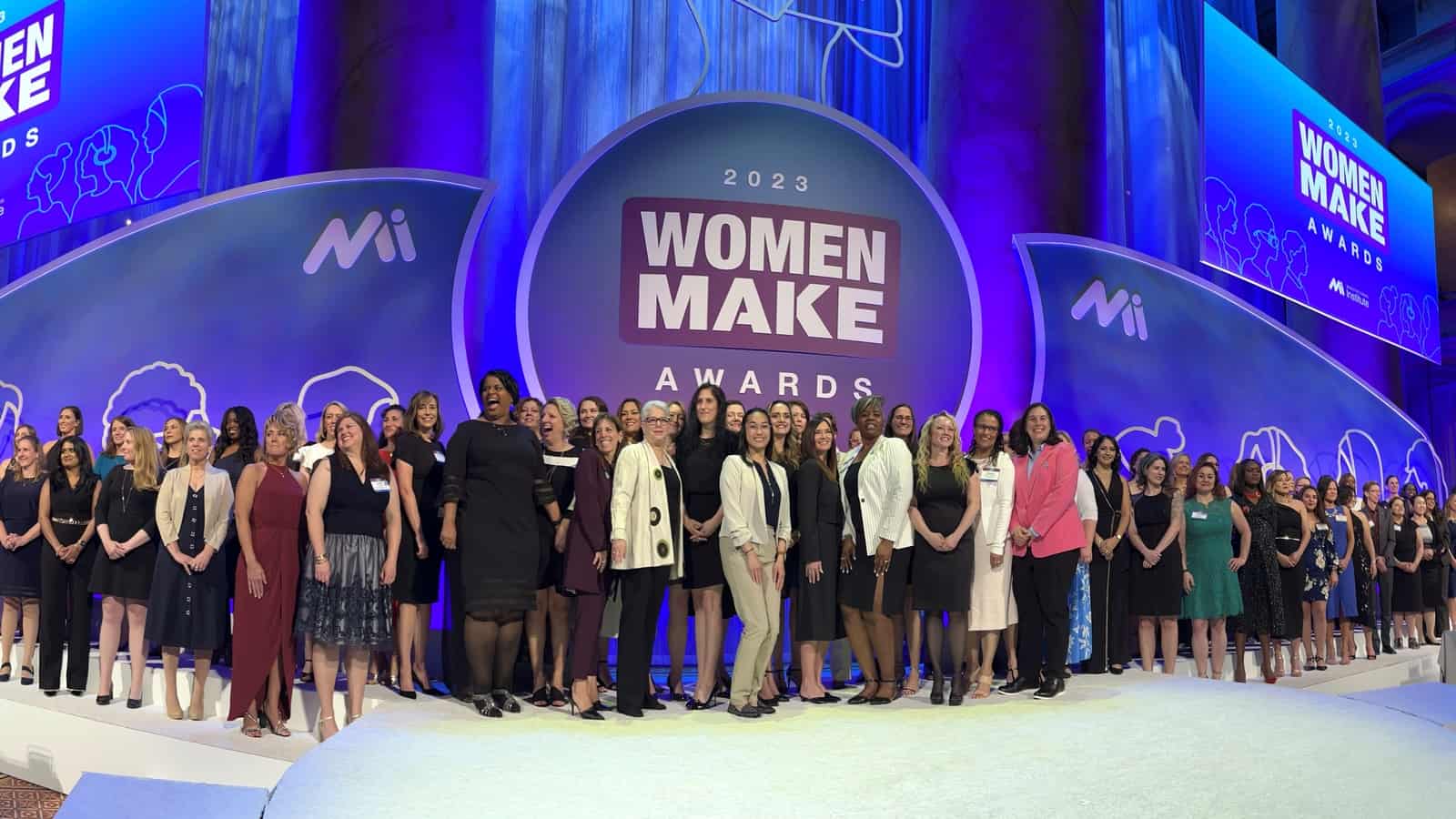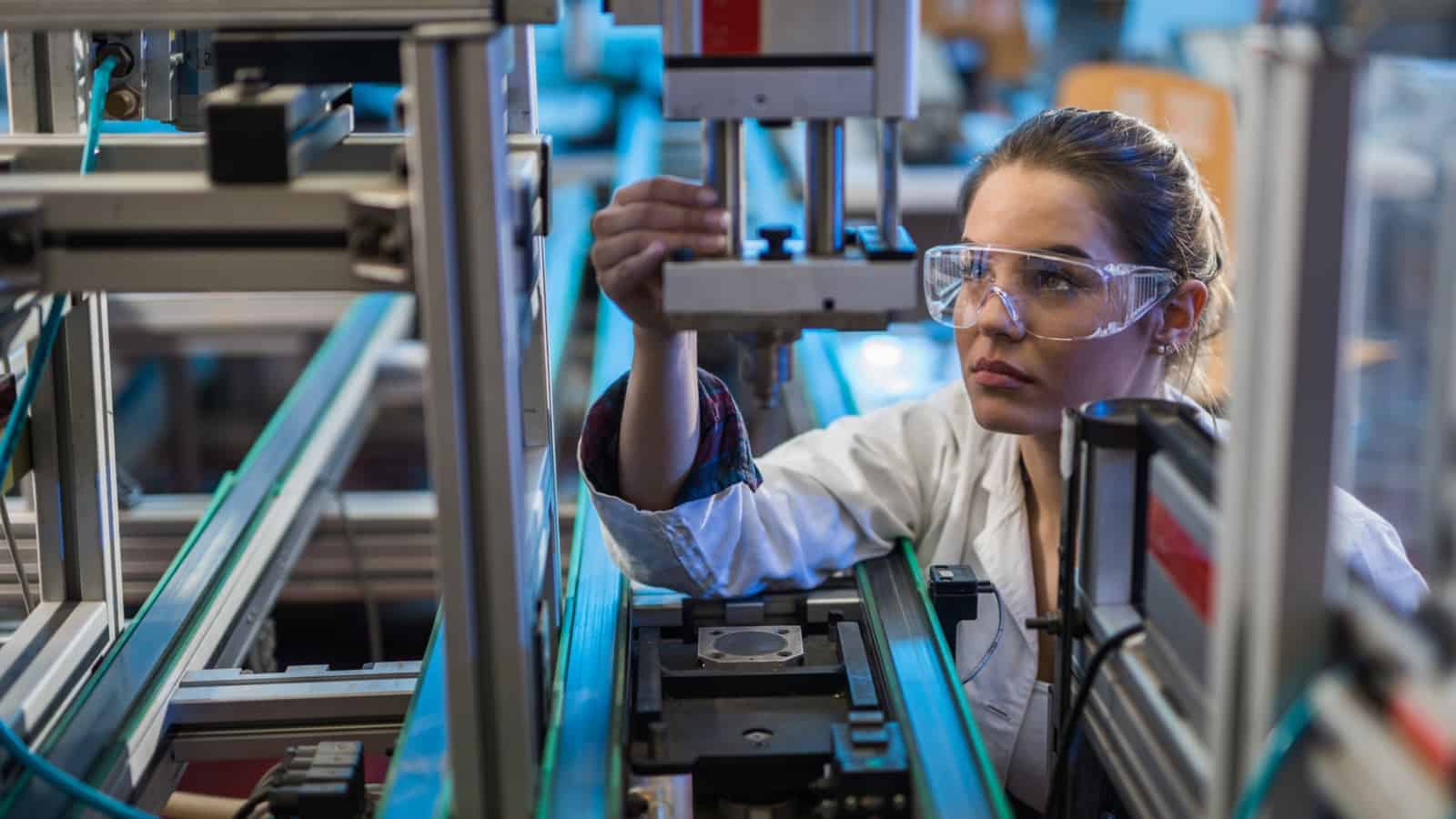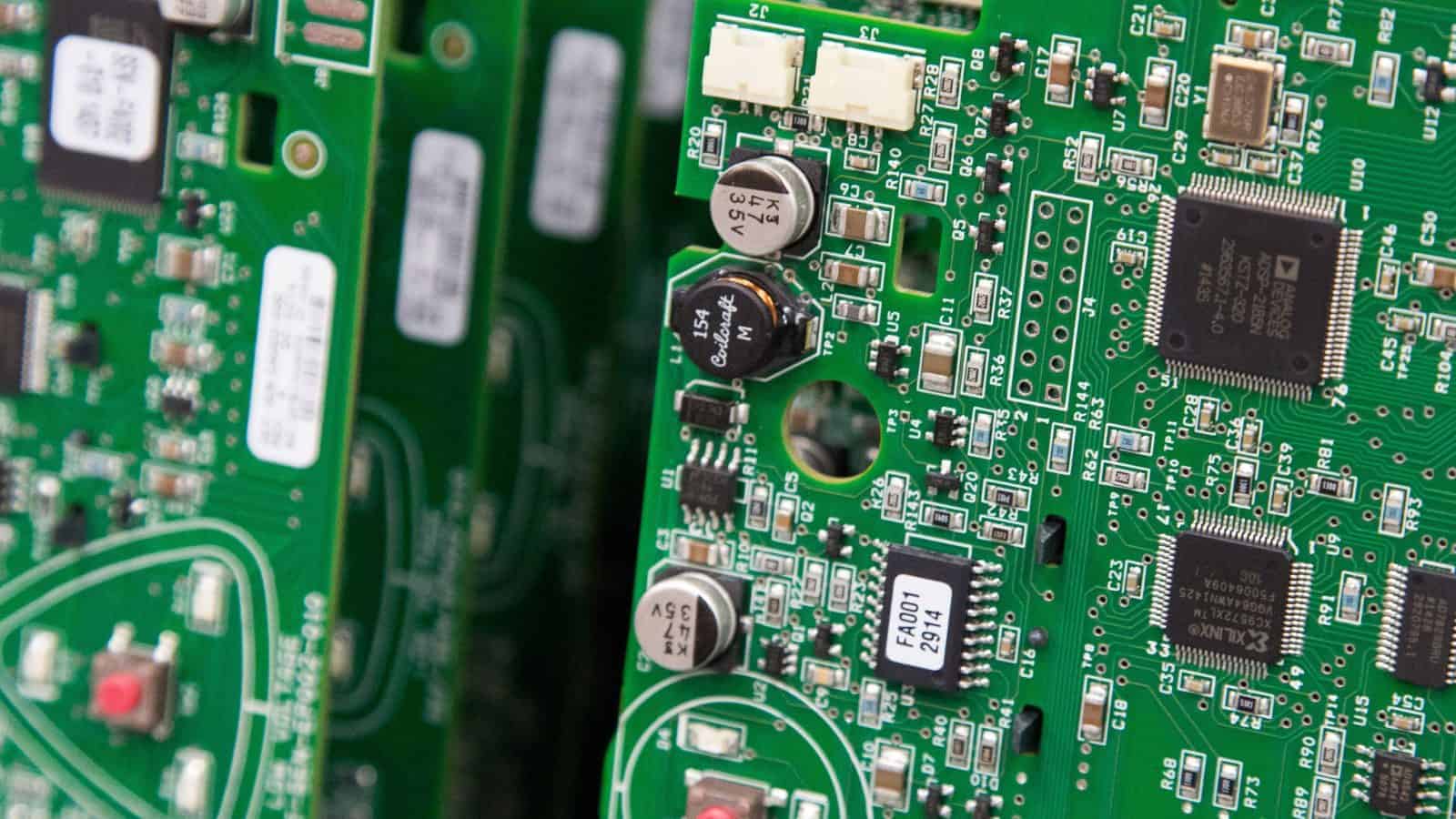Start-ups Seek Improved AC

With the backing of major HVAC manufacturers, start-ups are working to make air conditioners that are capable of easing the strain on the power grid, according to The Wall Street Journal (subscription).
What’s going on: “Companies such as Blue Frontier, Transaera and Montana Technologies are raising money from investors including industry giant Carrier Global … to develop more efficient technologies. Many of those efforts focus on the humidity rather than the heat, using new materials like liquid salt to dry out the air.”
Why it’s important: The number of air conditioners in use worldwide is expected to more than double by the middle of the century, to 5.5 billion, with many units likely to be inefficient.
- “Stalwarts such as Carrier and Trane Technologies say they are spending billions of dollars to offer more efficient versions of conventional ACs while evaluating the new approaches.”
A different AC unit: Traditional air-conditioning units work by converting refrigerants from gas to liquid and then back again, while circulating air with fans. They are unable to remove humidity without cooling the air, which is what makes them inefficient, according to the article.
- “Blue Frontier aims to separate humidity and temperature control using a liquid salt solution that was developed with the National Renewable Energy Laboratory. The solution also stores energy, reducing consumption at peak times, when electricity grids are strained on hot days.
- Innovation is also required to make air conditioning affordable for people in developing nations, according to the Journal.
More investment: “The need for new approaches is pushing Carrier to make venture investments to complement its other growth strategies, said Jennifer Anderson, Carrier’s chief sustainability officer. Trane is investing in startups like data-center-cooling company LiquidStack while looking at new technology approaches, CEO Dave Regnery said.”
Second Phase of CHIPS Act Funding Begins

Businesses “that provide tools, chemicals and other supplies for the semiconductor industry” may now apply for a piece of the funds set aside in last year’s CHIPS and Science Act, according to The Wall Street Journal (subscription).
What’s going on: Late last week, the Biden administration announced broadened eligibility for companies capable of using federal subsidies to increase chip production in the U.S.
- Last year’s legislation, which the NAM championed, earmarked $39 billion for the purpose.
- In February, the Commerce Department’s CHIPS Program Office began “accept[ing] applications for the construction, expansion, or modernization of semiconductor materials and manufacturing equipment facilities for which the total capital investment equals or exceeds $300 million,” according to the National Institute of Standards and Technology, which is part of Commerce.
Why it’s important: “‘We can have as many fabs [chip plants] as we want, but the reality is, we also need the supply chain—the chemicals, the material, the tools that go into those fabs,’ Commerce Secretary Gina Raimondo said at a briefing,” according to the Journal.
Lots of interest: Nearly 400 businesses across 37 states have signaled their interest in receiving funds under this latest phase.
- “The department is already accepting full applications for the C[HIPS] Act funding from companies with plans to build facilities for leading-edge semiconductors, and will soon accept submissions from companies that plan to build chips that are currently state-of-the-art or older.”
- Suppliers may begin submitting applications this fall, but the administration has not yet said when the funds will be disbursed.
Pic of the Day

UL Solutions broke ground on its North America Advanced Battery Laboratory in Auburn Hills, Michigan, yesterday—with the NAM in attendance! The new facility will offer testing and certification for EVs and industrial batteries, a crucial step in establishing EV-ecosystem hubs.
Largest Manufacturing Campaign in the Nation, Creators Wanted, Arrives at the Indianapolis Motor Speedway
Indianapolis, Indiana – The National Association of Manufacturers, the Manufacturing Institute, the workforce development and education affiliate of the NAM, and Snap-on Incorporated are bringing the industry-leading Creators Wanted campaign to the Indianapolis Motor Speedway.
The Creators Wanted Tour is on-site at Fan Midway by the IMS Kids Zone on Friday, May 26, and Saturday, May 27, from 8:00 a.m. to 3:00 p.m. EDT and Sunday, May 28, from 6:00 a.m. to 12:30 p.m. EDT. The Creators Wanted Tour brings the excitement of modern manufacturing to life for all ages, with an immersive experience (an escape room–style activity) that challenges participants to race to the future and with resources to help younger race fans and their families explore how they can be part of creating, making, tinkering and building in the United States.
The manufacturing industry in the United States has approximately 700,000 open jobs. Creators Wanted strives to, by 2025, empower 600,000 new manufacturing team members, increase the number of students enrolling in technical and vocational schools or reskilling programs by 25% and increase the positive perception of the industry by parents to 50% from 27%.
“‘Creators Wanted’ is a critical message to all young people, parents, caregivers and educators across our country,” said Snap-on Chairman and CEO, NAM Executive Committee Member and MI Board Member Nick Pinchuk. “Snap-on is proud to bring the Creators Wanted Tour to the IMS and the Indianapolis 500 showing younger race fans and their families that manufacturing is an exciting place where the opportunities are many, the careers are rewarding and the lives are filled with the pride of being part of something greater than yourself.”
Since its launch in 2021, the Creators Wanted Tour has visited 16 cities, reaching more than 9,000 students in person, along with more than 2,400 parents, teachers, mentors and local leaders. The campaign has also built an email roster of more than 1.2 million students and career mentors interested in manufacturing careers.
“The world’s largest single day sporting event meets the nation’s largest manufacturing campaign—and it’s going to rev up enthusiasm about modern manufacturing in a big way with more students and their families,” said NAM President and CEO and MI Chairman of the Board Jay Timmons. “Together with our partners like Snap-on, we’re building excitement about modern manufacturing careers and providing the resources for people to reach their full potential.”
Indiana Manufacturing Facts:
- There were 23,936 total manufacturing job postings in Indiana from January 2023 to March 2023. In addition, there were 84,904 unique manufacturing job postings from January 2022 to December 2022.
The NAM will continue its Creators Wanted Tour with stops across the country. For more information on the campaign, visit CreatorsWanted.org.
-NAM-
The National Association of Manufacturers is the largest manufacturing association in the United States, representing small and large manufacturers in every industrial sector and in all 50 states. Manufacturing employs nearly 13 million men and women, contributes $2.90 trillion to the U.S. economy annually and accounts for 55% of private-sector research and development. The NAM is the powerful voice of the manufacturing community and the leading advocate for a policy agenda that helps manufacturers compete in the global economy and create jobs across the United States. For more information about the NAM or to follow us on Twitter and Facebook, please visit www.nam.org.
-The MI-
The Manufacturing Institute grows and supports the manufacturing industry’s skilled workers for the advancement of modern manufacturing. The MI’s diverse initiatives support all workers in America, including women, veterans and students, through skills training programs, community building and the advancement of their career in manufacturing. As the 501(c)3 nonprofit workforce development and education affiliate of the National Association of Manufacturers, the MI is a trusted adviser to manufacturers, equipping them with resources necessary to solve the industry’s toughest challenges. For more information on the MI, please visit www.themanufacturinginstitute.org.
-Snap-on-
Snap-on Incorporated is a leading global innovator, manufacturer and marketer of tools, equipment, diagnostics, repair information and systems solutions for professional users performing critical tasks, including those working in vehicle repair, aerospace, the military, natural resources and manufacturing. From its founding in 1920, Snap-on has been recognized as the mark of the serious and the outward sign of the pride and dignity working men and women take in their professions. Products and services are sold through the company’s network of widely recognized franchisee vans, as well as through direct and distributor channels, under a variety of notable brands. The company also provides financing programs to facilitate the sales of its products and to support its franchise business. Snap-on, an S&P 500 company, generated sales of $4.5 billion in 2022 and is headquartered in Kenosha, Wisconsin.
For additional information on Snap-on, visit www.snapon.com.
Solution Series: Recruitment Workshop
Solution Series: Recruitment Workshop
The MI recently convened a group of manufacturers to discuss recruitment challenges and identify ways to address them. After hearing from experts on topics ranging from the current labor market, second chance hiring, the gig economy and the importance of speed in recruitment, participants broke out into small groups to discuss the top challenges they were facing and brainstorm solutions.
KEY TAKEAWAYS:
- Determine who owns what part of the recruitment process as well as how team members will be held accountable.
- Advertise the position effectively, streamline the application process and screen as many people in as possible.
- Invest time and resources into sourcing talent.
Check out our recap article of the event here. Stay tuned for an in-depth summary report highlighting the solutions that manufacturers are testing and implementing to address recruitment challenges.
Women MAKE Awards Showcase Manufacturing Excellence

The energy and enthusiasm of the night were fittingly high for the occasion: a gala to honor 130 standout women in manufacturing.
What went on: The Manufacturing Institute’s 2023 Women MAKE Awards—formerly the STEP Ahead Awards—took place Thursday evening at the National Building Museum in Washington, D.C., following the two-day Women MAKE Leadership Conference. (The MI is the NAM’s 501(c)3 workforce development and education affiliate.)
- The gala—which featured a live performance by violinist Ezinma and was sponsored this year by BASF, Trane Technologies, Amazon and others—is held each year to honor women in manufacturing who exemplify leadership in their careers.
- This year the awards recognized 100 honorees and 30 “emerging leaders,” women under the age of 30 who have achieved unique accomplishments.
What was said: MI President and Executive Director Carolyn Lee delivered the night’s opening remarks, telling audience members she was humbled to be in their midst.
- “We have women who have launched entire product lines,” she said. “Women with dozens of patents to their name. Women who oversee the production and distribution of millions of products every day … women who constantly exceed expectations.”
- Carolyn Lee touched on the MI’s year-old 35×30 campaign, which aims to raise the percentage of women in manufacturing from 29% to 35% by 2030, and said the women honored at the gala serve as inspiration to young women considering manufacturing careers. “Because if you can see it, you can be it,” she said.
“The opportunity”: WMA Chair and Cornerstone Building Brands President and CEO Rose Lee underscored the importance of filling the current shortfall of manufacturing workers.
- If the shortage continues unchecked, the number of missing workers could exceed 2 million by 2030, she said, citing a study by the MI and Deloitte.
- “Therein lies the opportunity to engage an untapped, underutilized pool of women talent in the vitally important manufacturing sector,” Lee continued. “This is the collective work we need to pursue, and the honorees and emerging leaders here tonight are advancing this work by demonstrating the myriad ways in which women can achieve professional success in the manufacturing industry.”
Thank you: MI Board Chair and NAM President and CEO Jay Timmons thanked the honorees for showing the next generation what’s possible.
- “Thank you for being role models—including for my daughters and my son, the many families we have in this room and the people you impact every day,” Timmons said. “The ripple effect you can have is incalculable.”
From one to many: Rounding out the night’s lineup was event Vice Chair and Caterpillar Inc. Group President of Resource Industries Denise Johnson, who told the audience it was “remarkable” to be in a room with so many other women in manufacturing.
- “There have been many times throughout my career when I’ve been the only woman in a room, the only woman on a project,” she said. “What an incredible change of pace this is. I … am overwhelmed with gratitude and pride for how far we’ve come. Congratulations to all of you.”
NAM Applauds Congressional Focus on Key Manufacturing Tax Provisions
New Bipartisan, Bicameral Bill to Address Interest Deductibility Introduced Today
Washington, D.C. – Following the American Investment in Manufacturing (AIM) Act, bipartisan, bicameral legislation that would reinstate the Earnings Before Interest, Tax, Depreciation and Amortization (EBITDA) measure for U.S. businesses, National Association of Manufacturers President and CEO Jay Timmons released the following statement:
“America’s leadership in the world and our ability to defend American values depend on a strong and thriving manufacturing industry. The AIM Act will strengthen our ability to make critical investments in machinery and equipment while protecting more than 450,000 American jobs,” said Timmons. “We thank the bipartisan group of House and Senate members who understand that a competitive tax environment is a key driver to ensure that we can continue to grow and invest in manufacturing in America at this critical time.”
Over the past month, both chambers of Congress introduced legislation to 1) restore the immediate deductibility of research and development costs; 2) reverse the new, stricter limit on interest deductibility; and 3) revise the tax code to restore businesses’ ability to take 100% deductions for equipment and machinery purchases in the tax year of purchase.
“While the U.S. tax code is making it harder for manufacturers to grow, other countries are encouraging industrial investment. For example, China is giving manufacturing companies there a 200% deduction for R&D, while the U.S. only offers a fraction of that. The legislation that’s been introduced can help us turn the tables and make it easier for America to out-innovate China,” Timmons added. “So we’re asking Congress and the Biden administration to make passage of these bills a priority so we can build on the successes that we had following tax reform in 2017, when manufacturers were able to keep their promises and invest in their companies and communities across the board.”
Background:
Research and development: On Jan. 1, 2022, a harmful tax change went into effect that makes R&D more expensive in the United States by requiring businesses to deduct their R&D expenses over a period of years.
Read more about the NAM’s work on this provision here.
Interest deductibility: When manufacturers borrow funds to buy capital equipment, the interest they pay on those loans is tax deductible up to a certain limit. But a recent change in the tax law modified how that limit is calculated—shrinking the deduction for companies that invest in long-lived depreciable assets, making debt financing more expensive and the U.S. an outlier among advanced economies and leaving less capital for job creation and investment.
Read more about the NAM’s work on this provision here.
Full expensing: Under the 2017 tax law, manufacturers were able to deduct 100% of their investments in assets with long, useful lives, supporting their ability to acquire vital equipment and strengthening their competitiveness. However, the ability to deduct 100% of these costs began to phase down at the beginning of 2023 and is set to expire completely in 2027.
See how full expensing has benefited small manufacturers in the United States here.
-NAM-
The National Association of Manufacturers is the largest manufacturing association in the United States, representing small and large manufacturers in every industrial sector and in all 50 states. Manufacturing employs nearly 13 million men and women, contributes $2.90 trillion to the U.S. economy annually and accounts for 55% of private-sector research and development. The NAM is the powerful voice of the manufacturing community and the leading advocate for a policy agenda that helps manufacturers compete in the global economy and create jobs across the United States. For more information about the NAM or to follow us on Twitter and Facebook, please visit www.nam.org.
Announcing the 2023 Manufacturing Leadership Award Finalists!

The Manufacturing Leadership Council—the NAM’s digital transformation division—has announced the finalists for the 2023 Manufacturing Leadership Awards, the industry’s premier awards program for achievements in digital manufacturing. You can read the complete list of finalists here.
The ceremony: The finalists will be honored at the Manufacturing Leadership Awards Gala in Marco Island, Florida, on June 28.
- Also announced at the gala will be winners for all project and individual categories, winners of the Manufacturing in 2030 Award, the Manufacturing Leader of the Year, the Small/Medium Enterprise Manufacturer of the Year and the Large Enterprise Manufacturer of the Year.
Rethink: Certain award winners will also present at Rethink, the industry’s leading event for exploring manufacturing’s digital era, which will also take place in Marco Island on June 26–28.
The categories: The awards are divided into nine project categories to recognize company achievements:
- Artificial Intelligence and Machine Learning
- Collaborative Ecosystems
- Digital Network Connectivity
- Digital Supply Chains
- Engineering and Production Technology
- Enterprise Technology Integration
- Operational Excellence
- Sustainability and the Circular Economy
- Transformational Business Cultures
Additionally, individual leaders are recognized in the Digital Transformation Leadership and Next-Generation Leadership categories.
The last word: “As more manufacturers extend digital’s reach onto the factory floor and throughout their operations, we are witnessing transformative performance improvements that would have been unthinkable just a few short years ago—and that are improving life for employees and customers alike,” said MLC Co-Founder, Vice President and Executive Director David R. Brousell.
Senators Reintroduce Crucial R&D Bill

A bipartisan Senate duo introduced legislation on Thursday that would both allow businesses to once again fully deduct R&D expenses in the year they are made and expand the refundable R&D tax credit.
What’s going on: The American Innovation and Jobs Act, sponsored by Sens. Maggie Hassan (D-NH) and Todd Young (R-IN), would restore the immediate deductibility of R&D expenses. Last year, a tax change went into effect requiring companies to amortize or deduct their R&D investments over a period of years, making R&D more costly.
Why it’s important: According to a recent NAM analysis, the sector would lose nearly 60,000 jobs and face an output decline of more than $31 billion this year alone if the change is not reversed.
- The U.S. has now become a global outlier, joining Belgium as the only other developed country requiring the amortization of R&D expenses.
- Meanwhile, China provides a 200% “super deduction”—20 times the amount allowed in the U.S. tax code—for its manufacturers’ research.
The NAM says: “Manufacturers applaud the introduction of the American Innovation and Jobs Act, which will help the U.S. out-compete China,” said NAM Managing Vice President of Tax and Domestic Economic Policy Chris Netram.
- “Across the country, manufacturers are hiring workers, investing in communities and creating the products, materials and processes that drive us forward. Congress should approve the American Innovation and Jobs Act quickly to support critical research that allows manufacturers to improve lives in America and for people around the world.”
Learn more: Read our stories on how the 2022 expensing requirement is impacting International Paper, Marlin Steel Wire Products, Ultragenyx, Miltec UV and Brewer Science (whose story was also covered today by The Wall Street Journal, subscription).
Sens. Hassan and Young Reintroduce Crucial R&D Legislation
American Innovation and Jobs Act will ensure that the tax code supports the ability of manufacturers to out-compete China and create well-paying jobs
Washington, D.C. – Following the introduction of the American Innovation and Jobs Act by Sens. Maggie Hassan (D-NH) and Todd Young (R-IN), National Association of Manufacturers Managing Vice President of Tax and Domestic Economic Policy Chris Netram released the following statement:
“Manufacturers are hiring workers, investing in communities across the United States and creating the products, materials and processes that drive America forward. Manufacturers applaud the introduction of the bipartisan American Innovation and Jobs Act, which restores full deductions for research, helping the American industry out-compete China, which provides a 200% super deduction for manufacturers’ research—20 times the amount in the U.S. tax code,” said Netram. “Manufacturers, the vast majority of which are quite small, perform 55% of private-sector research and development. These investments in innovation spur economic growth and support the creation of high-paying jobs across the country. Congress should approve the American Innovation and Jobs Act quickly to support critical research that allows manufacturers to improve lives in America and for people around the world.”
Background: As of 2022, manufacturers can no longer immediately deduct their R&D expenses in the year in which they are incurred. Instead, manufacturers must deduct or amortize their expenses over a number of years, which makes R&D much more expensive to undertake. The American Innovation and Jobs Act would restore the immediate deductibility of R&D expenses, a policy that was in place for nearly 70 years. In the 117th Congress, the American Innovation and Jobs Act garnered 35 cosponsors: 17 Democrats and 18 Republicans. A recent analysis released by the NAM finds that the industry would lose 59,392 jobs and face a decline in output of $31.69 billion this year if Congress does not act.
-NAM-
The National Association of Manufacturers is the largest manufacturing association in the United States, representing small and large manufacturers in every industrial sector and in all 50 states. Manufacturing employs nearly 13 million men and women, contributes $2.81 trillion to the U.S. economy annually and accounts for 55% of private-sector research and development. The NAM is the powerful voice of the manufacturing community and the leading advocate for a policy agenda that helps manufacturers compete in the global economy and create jobs across the United States. For more information about the NAM or to follow us on Twitter and Facebook, please visit www.nam.org.
